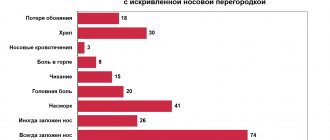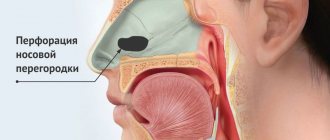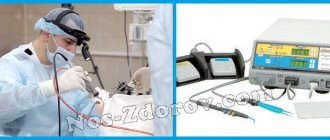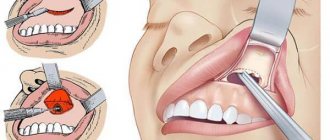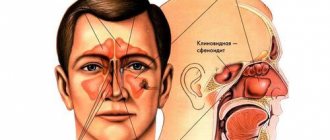Otoplasty literally means “ear reshaping” and in most cases this procedure is used to correct excessively protruding ears.
Abnormally protruding ears occur in approximately 5% of the population.
Protruding or protruding ears can cause psychological trauma to the patient due to unpleasant comments. The ideal age for correcting this defect is between five and seven years old, because at this age the ears are already fully formed and have an adult size, and also to prevent stressful situations for children who often face ridicule.
Otoplasty can help men, women and children of all ages overcome the embarrassment and frustration caused by irregularly shaped or protruding ears.
Otoplasty is one of the most commonly performed cosmetic procedures for children. The surgeon's ultimate goal is to create a natural, proportional and symmetrical appearance of the ears.
Ears may appear enlarged due to the following factors:
- the ear cartilage is formed without bending close to the upper edge,
- an excessive amount of cartilage forms in the middle of the ear,
- the angle between the ear is greater than normal.
Progress of the operation
The operation is performed under general anesthesia and is usually performed on both ears, but sometimes people have only one protruding ear that undergoes correction. Surgery on both ears can take approximately 120 minutes and is performed under local anesthesia, with additional intravenous sedation. For children, general anesthesia is used.
Otoplasty is performed by refining or thinning the cartilage structure of the ear. Surgical incisions are usually placed behind the ear in the natural crease (where the ear meets the head) and therefore scars from this procedure are usually not visible.
The technique varies depending on the problem that needs correction, and is usually a combination of cartilage resection and removal of excess soft tissue behind the ear. In most cases, surgery involves placing permanent stitches to position the ear closer to the head. After surgical cartilage correction, the skin at the back of the ear is secured in place using surgical sutures and then maintained in its new position using carefully applied pressure (bandage, compression bandage). If non-absorbable materials are used, sutures are usually removed 5-7 days after surgery.
Features and advantages of laser otoplasty
Laser otoplasty has been especially popular for several years, because it is less traumatic, painless and does not require much time. Its peculiarity is that a laser beam is used instead of a conventional scalpel. With its help, you can simulate any ear and carry out the most complex correction.
The advantages of laser otoplasty over conventional otoplasty are obvious. This operation is often called bloodless, since the laser scalpel is able to solder the walls of blood vessels, which reduces blood loss during the operation. Experts note that cartilage tissue becomes plastic under the influence of a laser, which allows the ear to be given a new shape. In addition, traces of otoplasty after exposure to a laser beam are not visible at all, because it is able to disinfect the surgical site, so the sutures heal much faster. Postoperative recovery time is reduced.
Postoperative stage
During the postoperative phase of otoplasty, it is important to follow all instructions from the surgeon. Otoplasty is often performed on young children, so parents and caregivers play an important role in providing postoperative care. In general, the postoperative period for ear surgery is 7-10 days and includes normal recovery. Complications are rare.
Bandage
Postoperative dressing is a very important part of surgery. After the procedure, the bandage compresses the surgical area and should remain in place for 48 hours. It will help maintain the new position of the ear in the immediate postoperative period, but mainly helps prevent the accumulation of blood (hematoma). You cannot manipulate the bandage yourself, even if there is slight bleeding (which is normal and should not frighten the patient).
It is important to monitor children after ear surgery to ensure that the bandage remains in place for the first 24 hours. The dressing is changed on the second and fourth days after surgery.
The dressing remains on the treated areas for the first five to seven days of the postoperative period. It is important not to move the bandage as this may increase the risk of infection and other complications. After removing the bandage, it is recommended to wear a compression bandage (elastic bandage) at night for 30 days. This will provide protection for your ears while you sleep to prevent them from shifting when moving. A compression bandage is needed to complete the healing of the cartilage.
Pain
In the postoperative period, the patient may experience mild pain. The pain is usually very minor. However, if the patient is hypersensitive to pain, the use of analgesics is recommended.
Ear sensitivity is a normal post-operative symptom that subsides quickly.
Patients typically describe feeling "pain and discomfort" rather than experiencing specific pain. These symptoms usually improve quickly after the surgical dressing is removed.
Swelling and bruising
During the first 2-3 weeks, noticeable swelling is observed. Bruises (bruises on the skin) may resolve spontaneously or require surgical drainage. It is important to remember that the body needs time to recover from surgical trauma. Your surgeon may recommend arnica ointments and medications to help relieve swelling and bruising post-oplasty. In some cases, the temperature may rise slightly over the course of two to three days.
Bleeding and bruising are rare. Sometimes slight bleeding may occur and, as a result, a hematoma forms between the cartilage and the skin, which quickly resolves on its own.
Patients are advised to stand as upright as possible during the early stages of recovery to allow residual swelling and bruising to resolve more quickly. After surgery, you should not take aspirin or medications containing aspirin or ibuprofen, as they have an anticoagulant effect.
Hygiene
It is important for patients to pay close attention to personal hygiene during the early postoperative period. You can take a bath 48 hours after the procedure, but you should not get the bandage wet.
After suture removal (7-14 days after surgery), patients are advised to gently shower and wash their hair daily to keep the wound healing area as clean as possible. It is recommended to wash your hair with warm water and mild shampoo (for example, baby shampoo). To dry your hair, use a soft towel, blotting it with gentle movements.
After the procedure, patients may be prescribed a week's course of antibiotics to minimize infections.
Chemical hair treatment (coloring, perm) is not recommended for several weeks after surgery, and only after consultation with a doctor. The earrings can be worn two weeks after surgery.
Sleep and rest
In the early postoperative period, the patient needs to sleep and rest as much as possible.
Young children should be kept at a low level of activity for the first few weeks after surgery.
During sleep, the patient's head should be supported by two or three pillows to keep the head elevated at 45 degrees relative to the horizontal position. It is also advisable to use two pillows on each side to avoid turning on your side during the night, which can cause harm to the operated area. The ideal position is on your back, with your head and body slightly elevated to reduce swelling.
Physical activity
The behavior of cartilage after remodeling is difficult to predict in the early postoperative period.
In the first 7 days, it is necessary to exclude any activity, exercise, or sport that can raise blood pressure and cause swelling.
To minimize injury, contact sports should be avoided. After two weeks, you can resume sports activities, but with caution so as not to subject your ears to excessive stress and possible injury.
Contact sports may be permitted after six weeks postoperatively. After a month, the patient can return to his normal physical activities, including gymnastics, swimming, etc.
Sun and warmth
The operated areas are sensitive to light for the first few weeks after surgery. Exposure to the sun is allowed only after 30 days. Until then, short walks in the sun are allowed, with the mandatory use of sunscreen. It is recommended to wear sunglasses for a month. Avoid extreme heat (eg, sauna, solarium). The skin is still sensitive and such exposure can cause 3rd degree burns.
Scarring
Otoplasty scars are usually not noticeable because they are hidden in the groove behind the ear. In case of development of pathological scars (keloids), doctors practice local corticosteroid therapy and the use of silicone patches.
What to do after otoplasty
- It is advisable to sleep on your back after ear surgery. However, there is an opinion of experts that in the absence of pain and complicated operations, sleep is possible even on the operated ears, that is, on the side.
- Visiting the pool, taking a bath, sauna, hammam, sauna are prohibited until postoperative sutures have completely healed, about two weeks.
- Sports training is also canceled until the ears heal. At the same time, contact sports are banned for an average of a year.
- Wearing glasses is acceptable after a month or two of ear surgery; at this time it is advisable to switch to lenses.
- Hair coloring and cutting are permissible after the seams have fused. At the same time, it is important that the ears are not bent or pulled back (this recommendation is relevant for 6-12 months after ear correction).
- Sunbathing and solarium are allowed from 7-14 days after consultation with the surgeon. It is worth considering that the seam areas are photosensitive to solar radiation; it is advisable to apply sunscreen and a hat.
- Alcohol for the first week, or preferably for a longer period, is undesirable, as it slows down healing and increases swelling in the ears.
Headphones that are inserted into the ears and large ones on top have no restrictions.
- You can wear earrings from the third day, with the exception of heavy jewelry that pulls down the earlobe and ear.
- Self-prescription of vitamin-mineral complexes, as well as the use of local ointments, is undesirable without a doctor’s prescription.
VIDEO REVIEW
Possible risks and complications
Complications can occur with any operation. Cosmetic surgery is usually performed voluntarily on healthy patients. Complications after otoplasty are rare.
Complications that occur in the postoperative period may include wound dehiscence, infections, partial or complete necrosis of the skin of the ears, and large hematomas requiring drainage.
Due to the nature of otoplasty, some of the nerves that provide sensation to the ear will be shortened, and the ear may lose some sensation. Most sensation will return, but some parts of the ear may remain numb. Changes in sensation and numbness in the ears are a common side effect up to 12 months after surgery.
Ear cartilage has “memory,” which means that the cartilage tends to return to its original shape.
After any otoplasty, it is possible for the ears to return to a protruding or protruding state.
Rare infections can be successfully treated with antibiotics.
Rehabilitation after ear surgery: late recovery period
If you have undergone otoplasty, how long does rehabilitation last after surgery is a question that should certainly interest you as a patient. Indeed, in the postoperative period, you should strictly follow the recommendations of the plastic surgeon who performed aesthetic correction of the auricles due to deformation of the cartilage or earlobe.
The late recovery period after complex surgery on the ears ends 30 days after plastic surgery. After surgical correction of the ears, it is important to ensure rapid tissue restoration so that complete healing of cosmetic sutures occurs.
- Diet. To stimulate the immune system and the tissue healing process, you should eat foods rich in protein, vitamins and beneficial minerals.
- Rejection of bad habits. Smoking and drinking alcohol interfere with rapid tissue healing, which can increase the recovery period after ear surgery.
- Limiting physical activity. Sports and heavy housework should be limited to prevent tissue displacement after otoplasty.
- Avoiding sun rays. Ultraviolet radiation is very dangerous because it impairs tissue regeneration. As a result, the rehabilitation process after laser or reconstructive surgery of the auricles and earlobes can increase up to 2 months.
- Be careful when washing your hair. It is very important that after surgery, shampoos, gels and other cosmetics do not come into contact with wounds and sutures on the ears, as a chemical burn may occur.
results
One week after surgery, initial aesthetic improvements in the shape and position of the ear can be assessed. After removing the bandage, patients immediately notice an improvement. Results will continue to improve over the next six weeks as residual swelling subsides, although the healing process is not yet complete.
However, swelling, changes in sensation, or some degree of numbness in the ears may persist for up to six months after surgery. During this period, subtle improvements to the ear contour will be observed.
The final results can only be assessed 12 months after surgery. As a rule, very good results are observed, but almost always the right and left ears are different, so that some asymmetry after surgery may be a consequence not of the procedure itself, but of the initial asymmetrical shape of the ears. Correction can be performed no earlier than three months after surgery.
How can you get rid of bruises faster?
Like any surgical intervention, during laser and reconstructive otoplasty the plastic surgeon damages the skin, so bruising and postoperative swelling on the face are inevitable. The use of a compression bandage and timely drug treatment will allow you to shorten the rehabilitation period after surgery. By following the medical recommendations given by the plastic surgeon, you will be able to get rid of bruises within a week after the operation. To relieve postoperative swelling, the patient should exclude salty and spicy foods from the diet, which prevent excess moisture from leaving the body.
After reconstructive or aesthetic plastic surgery of the ears and removal of surgical sutures, the patient should try to disturb the wound as little as possible and follow some rules before going to bed. One of the main requirements for the recovery period after surgery may be sleeping on your back in a compression bandage. In this case, you should not wash your hair for at least a week until the plastic surgeon removes the stitches.
To prevent bleeding after laser or reconstructive otoplasty of the ears, the patient should avoid physical activity that provokes an increase in pressure. You should forget about accessories in the form of glasses and earrings until the skin is completely restored. Such caution after surgery is necessary to reduce the risk of tissue infection and prevent inflammatory processes that can cause the appearance of scars and rough keloid scars in the suture area after laser otoplasty or surgery with a surgical scalpel.
The completion of the rehabilitation process completely stops a few months after the end of the operation. Sensitivity returns, the wound site stops hurting after two months. It is worth remembering that otoplasty surgery does not affect hearing in any way.
Recovery after otoplasty surgery varies from day to day for each patient individually. Photographs of patients published on our website in the “Otoplasty” section will allow you to evaluate the result of aesthetic correction of the ears.
The information on the site was personally verified by plastic surgeon Maxim Aleksandrovich Osin; if you have any additional questions, call the phone number listed on the site.
Ear correction surgery is the most desired surgery for those suffering from protruding ears. After surgery, it is important to follow all the surgeon’s recommendations to avoid complications.
